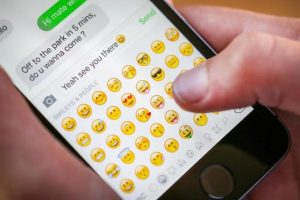short messaging service
Short Messaging Service
Vocabulary
| typical | case (3) | nature (2) |
| devote | slew (2) | abbreviation |
| decide | concept | authenticate |
| test (2) | emerge | prototype |
| receive | decipher | character (2) |
| spread | transmit | crowded out |
| profit | peak (2) | forerunner |
| add (2) | model (3) | neologism |
| rapid | network | competition |






Short message incoming
“Coming later. I must do something first, CU LU.”
A typical text on an SMS (Short Message Service). “CU LU” in this case means “I’ll see you later, love you”.
Over the past 25 years, SMS users have come up with a slew of abbreviations of this nature. There are even websites devoted entirely to deciphering SMS abbreviations.
SMS Premiere
In 1992, cell phones could not transmit or receive text messages, but in this year, the first SMS was sent from a computer by British Vodafone engineers testing a prototype SMS system. The text read: “Merry Christmas.”
The Inventors
Friedhelm Hillebrand, who then worked for the German postal service, and Bernhard Ghillebaert of PTT (the forerunner company to France Telecom), developed the concept for a Short Message Service in 1984. SMS became a Franco-German development.
How the 160 Character Limit was Set
The models for SMS were postcards and Telex messages. Developers studied these, and found that nearly all such communications were 160 characters or less in length. That’s how the maximum length of SMS messages was decided on.
A Golden Goose for Telecomms Companies
As mobile phones and SMS spread rapidly in the mid-1990s, big profits were made by telecomm firms. In 1996 about 100 million SMS were sent in Germany. By 2012, at the peak, 59 billion were sent. At a price that went as high as 39 cents (€) per SMS, a great deal of money was taken in by telecomms firms.
The Smartphone
In German, a new verb emerged to name the action of sending SMSs: “simsen”. The neologism was even added to dictionaries.
Starting in 2009, however, free smartphone messenger apps like WhatsApp, Facebook Messenger, Zoom, or Twitter (which is technically a “micro-blogging service”), increasingly crowded out the SMS.
Trust
Despite all the competition from internet apps, the SMS remains popular in Germany. In 2016, some 12.7 billion SMSs were sent over mobile phone networks, according to the federal telecommunications agency. Mailbox messages and authentification codes for online bank accounts are among the common uses nowadays.
Questions
1. Abbreviations are very common in texting or instant messaging. True or false?
2. Was the first Short Messaging Service (SMS) between two cell phones?
3. SMS was invented in the United States. Is this right or wrong?
4. Why do telecomm companies set a limit of 160 characters?
5. Texting and messaging was very profitable for telecomm companies. Is this correct or incorrect?
6. Are telecomm companies making even more money from texting services? Why is texting not as profitable as before?
7. Has SMS completely died out?
A. I often text my friends and colleagues. Yes or no?
B. What messaging apps do you use?
C. Do you always see people texting and messaging each other in public?
D. Are some people addicted to texting?
E. What will happen in the future?
